1. World Health Organization. Global Strategy for Infant and Young Child Feeding. Geneva, Switzerland: World Health Organization;2003.
2. Section on Breastfeeding. Breastfeeding and the use of human milk. Pediatrics. 2012; 129(3):e827–e841. PMID:
22371471.
3. Kramer MS, Kakuma R. Optimal duration of exclusive breastfeeding. Cochrane Database Syst Rev. 2012; 2012(8):CD003517. PMID:
22895934.
4. Victora CG, Bahl R, Barros AJ, França GV, Horton S, Krasevec J, et al. Breastfeeding in the 21st century: epidemiology, mechanisms, and lifelong effect. Lancet. 2016; 387(10017):475–490. PMID:
26869575.
5. Westerfield KL, Koenig K, Oh R. Breastfeeding: common questions and answers. Am Fam Physician. 2018; 98(6):368–373. PMID:
30215910.
6. Kim YJ. Immunomodulatory effects of human colostrum and milk. Pediatr Gastroenterol Hepatol Nutr. 2021; 24(4):337–345. PMID:
34316468.
7. Jang MJ, Kim YJ, Hong S, Na J, Hwang JH, Shin SM, et al. Positive association of breastfeeding on respiratory syncytial virus infection in hospitalized infants: a multicenter retrospective study. Clin Exp Pediatr. 2020; 63(4):135–140. PMID:
32024328.
8. Rito AI, Buoncristiano M, Spinelli A, Salanave B, Kunešová M, Hejgaard T, et al. Association between characteristics at birth, breastfeeding and obesity in 22 countries: the WHO European childhood obesity surveillance initiative – COSI 2015/2017. Obes Facts. 2019; 12(2):226–243. PMID:
31030194.
9. Binns C, Lee M, Low WY. The long-term public health benefits of breastfeeding. Asia Pac J Public Health. 2016; 28(1):7–14. PMID:
26792873.
10. Lee H, Park H, Ha E, Hong YC, Ha M, Park H, et al. Effect of breastfeeding duration on cognitive development in infants: 3-year follow-up study. J Korean Med Sci. 2016; 31(4):579–584. PMID:
27051242.
11. Lee JW, Lee M, Lee J, Kim YJ, Ha E, Kim HS. The protective effect of exclusive breastfeeding on overweight/obesity in children with high birth weight. jkms. J Korean Med Sci. 2019; 34(10):e85. PMID:
30886551.
12. Moon JS, Kim JY, Chang SH, Choi KH, Yang HR, Seo JK, et al. Development of a nutrition questionnaire and guidelines for the Korea national health screening program for infants and children. Korean J Pediatr Gastroenterol Nutr. 2008; 11(1):42–55.
13. Kim EY, Lee Y, Seo J, Ha J. Improvement of the screening program for infants and children in the national health screening system. Public Health Wkly Rep. 2021; 14(2):58–67.
14. Chung SH, Kim HR, Choi YS, Bae CW. Trends of breastfeeding rate in Korea (1994-2012): comparison with OECD and other countries. J Korean Med Sci. 2013; 28(11):1573–1580. PMID:
24265518.
16. Park HW, Ryu KH, Piao Y, Li P, Hong JS, Kim HB, et al. Positive effect of baby-friendly hospital initiatives on improving mothers’ intention for successful breastfeeding in Korea. J Korean Med Sci. 2018; 33(43):e272. PMID:
30344462.
17. Huh Y, Kim YN, Kim YS. Trends and determinants in breastfeeding among Korean women: a nationwide population-based study. Int J Environ Res Public Health. 2021; 18(24):13279. PMID:
34948892.
18. Korea Disease Control and Prevention Agency. Korea National Health and Nutrition Examination Survey in 2007-2009, 2010-2012, 2013-2015, 2016-2018 and 2019-2020. Accessed October 1, 2022.
http://www.cdc.go.kr
.
19. Kim SK, Kim YK, Kim HR, Park JS, Sohn CK, Cho YJ, et al. The 2012 National Survey on Fertility, Family Health & Welfare in Korea. Sejong, Korea: Korea Institute for Health and Social Affairs;2012.
20. Lee S, Park J, Lee S, Oh M, Choi H, Song M. The 2015 National Survey on Fertility, Family Health & Welfare in Korea. Sejong, Korea: Korea Institute for Health and Social Affairs;2015.
21. Lee SY, Kim EJ, Park JS, Byeon SJ, Oh MA, Lee SR, et al. The 2018 National Survey on Fertility, Family Health & Welfare in Korea. Sejong, Korea: Korea Institute for Health and Social Affairs;2018.
22. Choi EJ, Park EJ, Kim HR, Oh MA, Lee NH, Choi JH. Report on the Status of BF in Korea by Korea Institute for Health and Social Affairs. Sejong, Korea: Korea Institute for Health and Social Affairs;2016.
23. Chung W, Kim H, Nam CM. Breast-feeding in South Korea: factors influencing its initiation and duration. Public Health Nutr. 2008; 11(3):225–229. PMID:
17683647.
24. Kim MJ, Kim YM, Yoo JH. Factors affecting exclusive breast-feeding during the first 6 months in Korea. Pediatr Int. 2013; 55(2):177–180. PMID:
23110585.
25. Kweon S, Kim Y, Jang MJ, Kim Y, Kim K, Choi S, et al. Data resource profile: the Korea National Health and Nutrition Examination Survey (KNHANES). Int J Epidemiol. 2014; 43(1):69–77. PMID:
24585853.
27. Kim TH, Chung SH, Kim JH, Ahn Y, Shin SM, Lee WR, et al. Survey on the status of breastfeeding in Korean medical institution workers. J Korean Med Sci. 2022; 37(15):e120. PMID:
35437968.
28. Hawkins SS, Griffiths LJ, Dezateux C, Law C. Millennium Cohort Study Child Health Group. The impact of maternal employment on breast-feeding duration in the UK Millennium Cohort Study. Public Health Nutr. 2007; 10(9):891–896. PMID:
17381907.
29. Chimoriya R, Scott JA, John JR, Bhole S, Hayen A, Kolt GS, et al. Determinants of full breastfeeding at 6 months and any breastfeeding at 12 and 24 months among women in Sydney: findings from the HSHK birth cohort study. Int J Environ Res Public Health. 2020; 17(15):5384. PMID:
32726917.
30. Skafida V. Juggling work and motherhood: the impact of employment and maternity leave on breastfeeding duration: a survival analysis on Growing Up in Scotland data. Matern Child Health J. 2012; 16(2):519–527. PMID:
21274609.
31. Lima CM, Maymone W. Breastfeeding promotion and support policies in Brazil. Pediatr Gastroenterol Hepatol Nutr. 2019; 22(4):413–415. PMID:
31338318.
32. Basrowi RW, Sastroasmoro S, Sulistomo AW, Bardosono S, Hendarto A, Soemarko DS, et al. Challenges and supports of breastfeeding at workplace in Indonesia. Pediatr Gastroenterol Hepatol Nutr. 2018; 21(4):248–256. PMID:
30345237.
33. Dagher RK, McGovern PM, Schold JD, Randall XJ. Determinants of breastfeeding initiation and cessation among employed mothers: a prospective cohort study. BMC Pregnancy Childbirth. 2016; 16(1):194. PMID:
27472915.
34. Jeong YW, Kim EY. A study on factors related to smoking experience by sex: using the National Health and Nutrition Examination Survey (KNHANES IV-VII, 2007-2018). J Health Inform Stat. 2021; 46(3):352–361.
35. Bae SP, Lee WR, Hahn WH, Shin HJ, Ahn YM, Shin SM, et al. Survey of Korean pediatrician’s perceptions of barriers to and improvements in breastfeeding. Clin Exp Pediatr. 2022; 65(11):540–546. PMID:
35914772.
36. Li P, Rourke L, Leduc D, Arulthas S, Rezk K, Rourke J. Rourke Baby Record 2017: clinical update for preventive care of children up to 5 years of age. Can Fam Physician. 2019; 65(3):183–191. PMID:
30867174.
38. Hagan JF, Shaw JS, Duncan PM, editors. Bright Futures: Guidelines for Health Supervision of Infants, Children, and Adolescents. 4th ed. Elk Grove, IL, USA: American Academy of Pediatrics;2017.
39. Jonsdottir RB, Jonsdottir H, Orlygsdottir B, Flacking R. A shorter breastfeeding duration in late preterm infants than term infants during the first year. Acta Paediatr. 2021; 110(4):1209–1217. PMID:
32979246.
40. Whitford HM, Wallis SK, Dowswell T, West HM, Renfrew MJ. Breastfeeding education and support for women with twins or higher order multiples. Cochrane Database Syst Rev. 2017; 2(2):CD012003. PMID:
28244065.
41. Quigley M, Embleton ND, McGuire W. Formula versus donor breast milk for feeding preterm or low birth weight infants. Cochrane Database Syst Rev. 2019; 7(7):CD002971. PMID:
31322731.
42. Lee KS, Rha YH, Oh IH, Choi YS, Kim YE, Choi SH. Does breast-feeding relate to development of atopic dermatitis in young Korean children?: based on the fourth and fifth Korea national health and nutrition examination survey 2007–2012. Allergy Asthma Immunol Res. 2017; 9(4):307–313. PMID:
28497917.
43. Williams HC, Chalmers J. Prevention of atopic dermatitis. Acta Derm Venereol. 2020; 100(12):adv00166. PMID:
32419030.
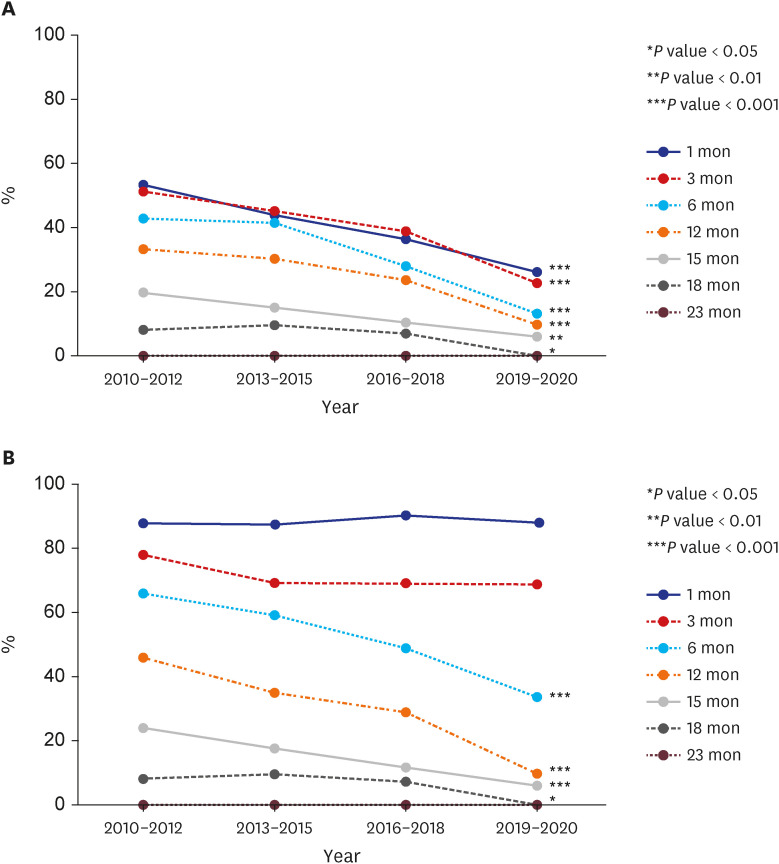
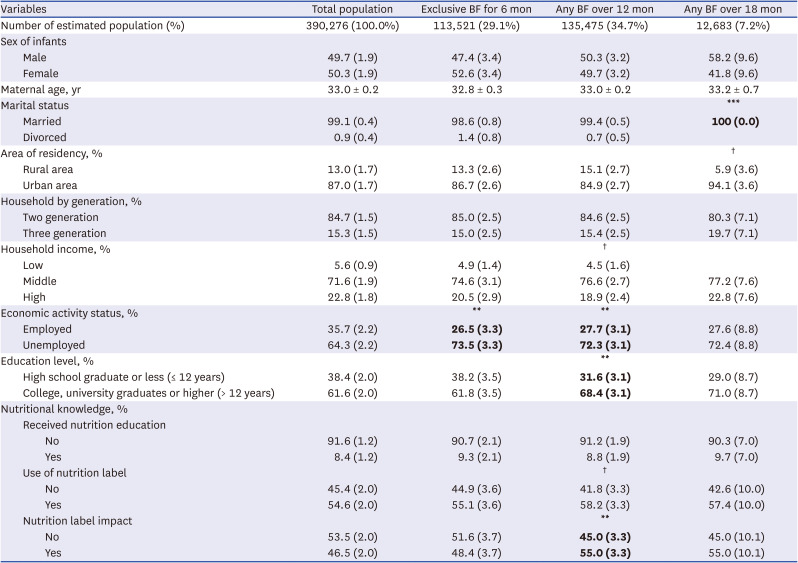
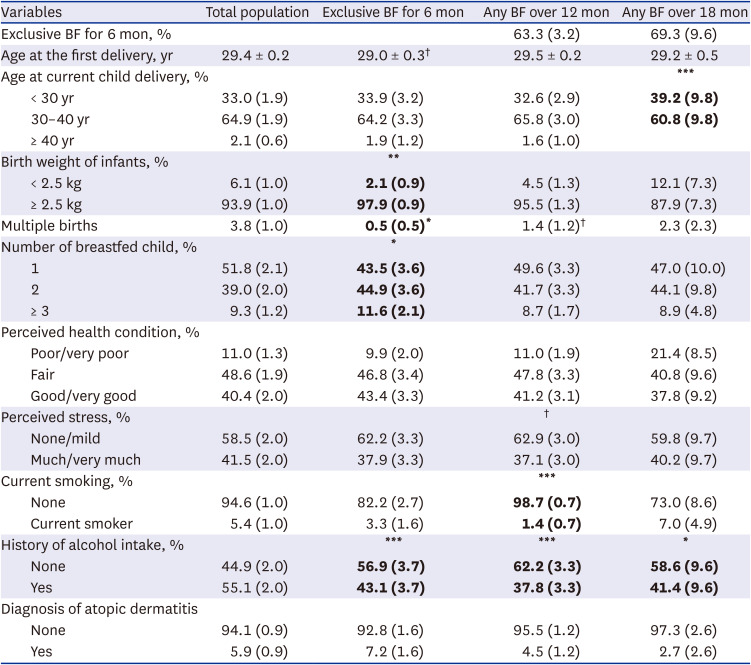
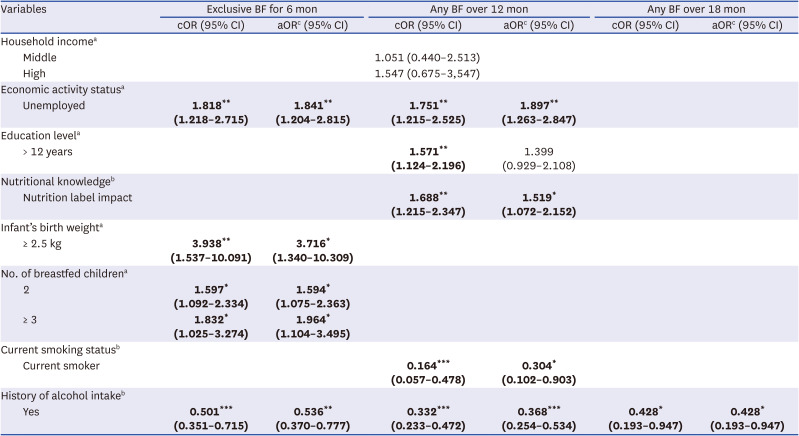




 PDF
PDF Citation
Citation Print
Print



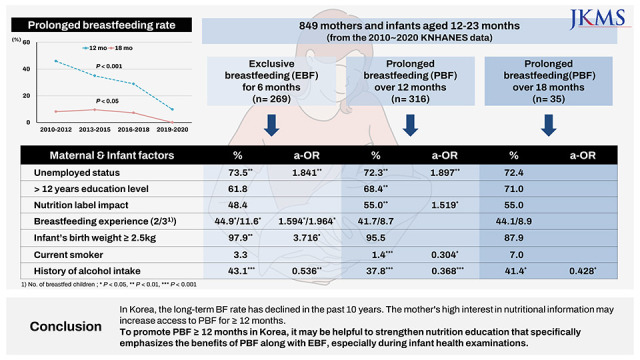
 XML Download
XML Download